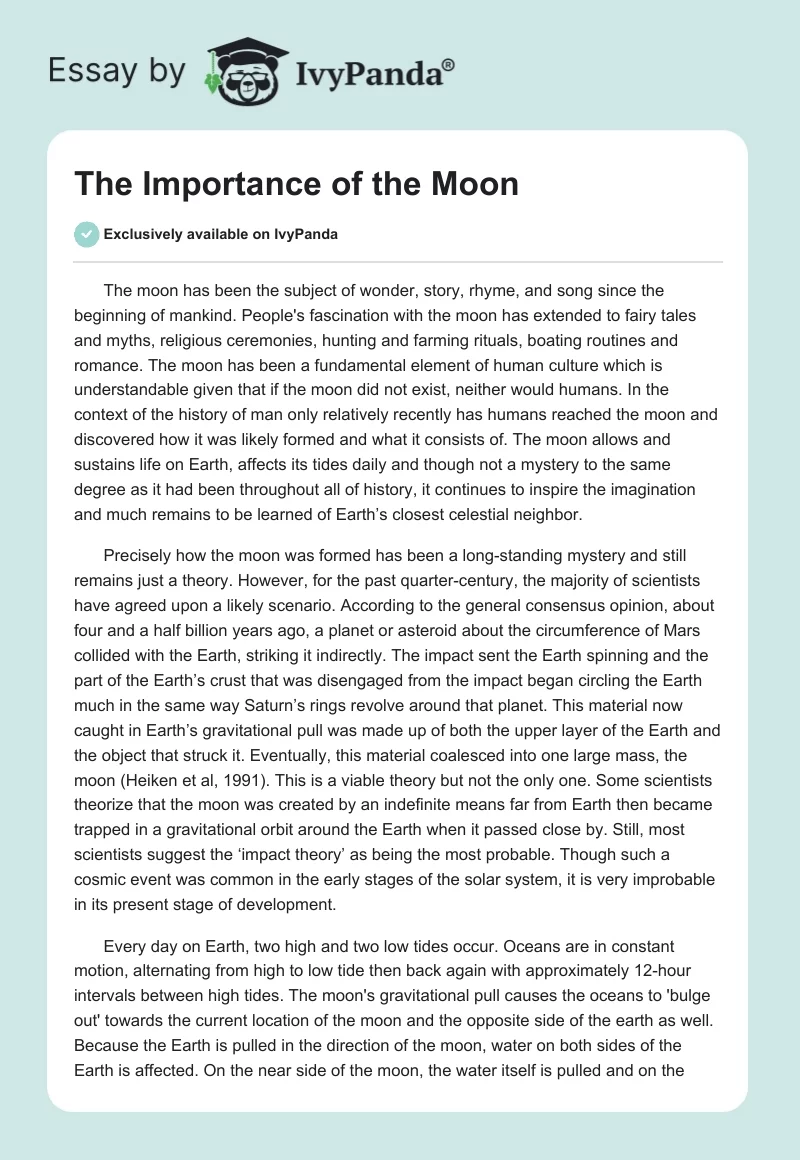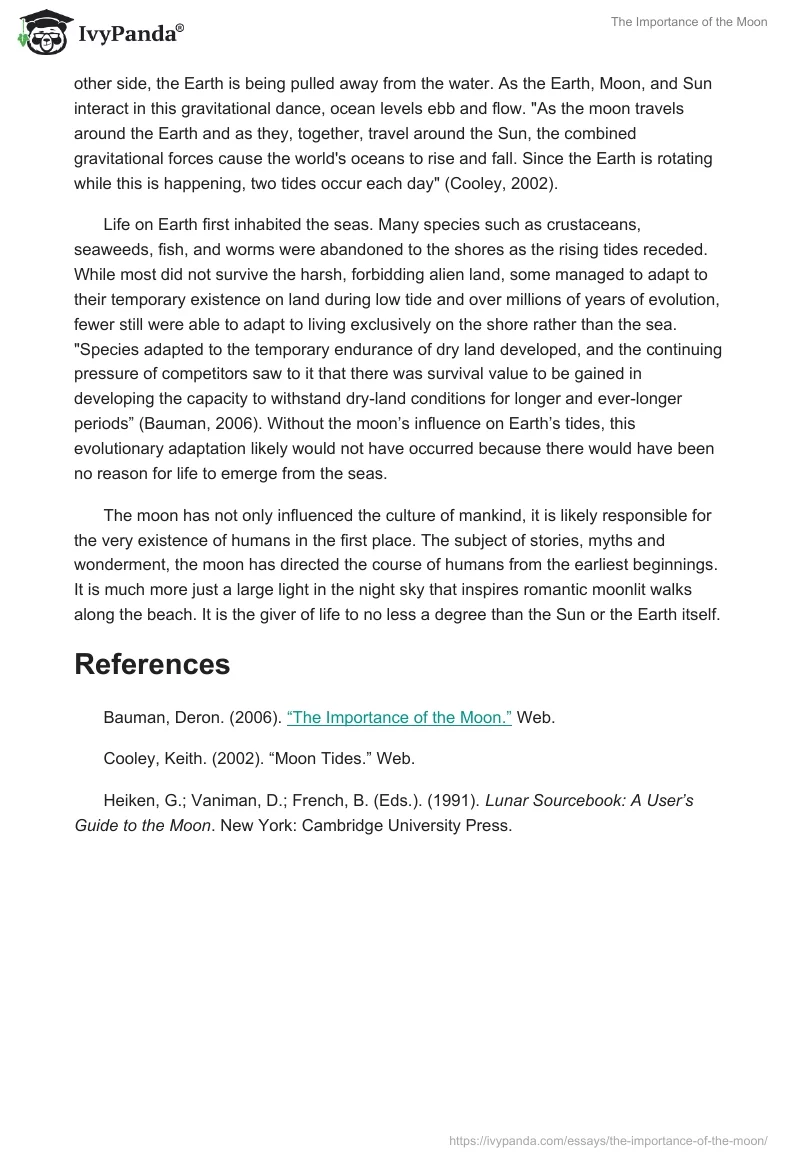The moon has been the subject of wonder, story, rhyme, and song since the beginning of mankind. People’s fascination with the moon has extended to fairy tales and myths, religious ceremonies, hunting and farming rituals, boating routines and romance. The moon has been a fundamental element of human culture which is understandable given that if the moon did not exist, neither would humans. In the context of the history of man only relatively recently has humans reached the moon and discovered how it was likely formed and what it consists of. The moon allows and sustains life on Earth, affects its tides daily and though not a mystery to the same degree as it had been throughout all of history, it continues to inspire the imagination and much remains to be learned of Earth’s closest celestial neighbor.
Precisely how the moon was formed has been a long-standing mystery and still remains just a theory. However, for the past quarter-century, the majority of scientists have agreed upon a likely scenario. According to the general consensus opinion, about four and a half billion years ago, a planet or asteroid about the circumference of Mars collided with the Earth, striking it indirectly. The impact sent the Earth spinning and the part of the Earth’s crust that was disengaged from the impact began circling the Earth much in the same way Saturn’s rings revolve around that planet. This material now caught in Earth’s gravitational pull was made up of both the upper layer of the Earth and the object that struck it. Eventually, this material coalesced into one large mass, the moon (Heiken et al, 1991). This is a viable theory but not the only one. Some scientists theorize that the moon was created by an indefinite means far from Earth then became trapped in a gravitational orbit around the Earth when it passed close by. Still, most scientists suggest the ‘impact theory’ as being the most probable. Though such a cosmic event was common in the early stages of the solar system, it is very improbable in its present stage of development.
Every day on Earth, two high and two low tides occur. Oceans are in constant motion, alternating from high to low tide then back again with approximately 12-hour intervals between high tides. The moon’s gravitational pull causes the oceans to ‘bulge out’ towards the current location of the moon and the opposite side of the earth as well. Because the Earth is pulled in the direction of the moon, water on both sides of the Earth is affected. On the near side of the moon, the water itself is pulled and on the other side, the Earth is being pulled away from the water. As the Earth, Moon, and Sun interact in this gravitational dance, ocean levels ebb and flow. “As the moon travels around the Earth and as they, together, travel around the Sun, the combined gravitational forces cause the world’s oceans to rise and fall. Since the Earth is rotating while this is happening, two tides occur each day” (Cooley, 2002).
Life on Earth first inhabited the seas. Many species such as crustaceans, seaweeds, fish, and worms were abandoned to the shores as the rising tides receded. While most did not survive the harsh, forbidding alien land, some managed to adapt to their temporary existence on land during low tide and over millions of years of evolution, fewer still were able to adapt to living exclusively on the shore rather than the sea. “Species adapted to the temporary endurance of dry land developed, and the continuing pressure of competitors saw to it that there was survival value to be gained in developing the capacity to withstand dry-land conditions for longer and ever-longer periods” (Bauman, 2006). Without the moon’s influence on Earth’s tides, this evolutionary adaptation likely would not have occurred because there would have been no reason for life to emerge from the seas.
The moon has not only influenced the culture of mankind, it is likely responsible for the very existence of humans in the first place. The subject of stories, myths and wonderment, the moon has directed the course of humans from the earliest beginnings. It is much more just a large light in the night sky that inspires romantic moonlit walks along the beach. It is the giver of life to no less a degree than the Sun or the Earth itself.
References
Bauman, Deron. (2006). “The Importance of the Moon.” Web.
Cooley, Keith. (2002). “Moon Tides.” Web.
Heiken, G.; Vaniman, D.; French, B. (Eds.). (1991). Lunar Sourcebook: A User’s Guide to the Moon. New York: Cambridge University Press.


